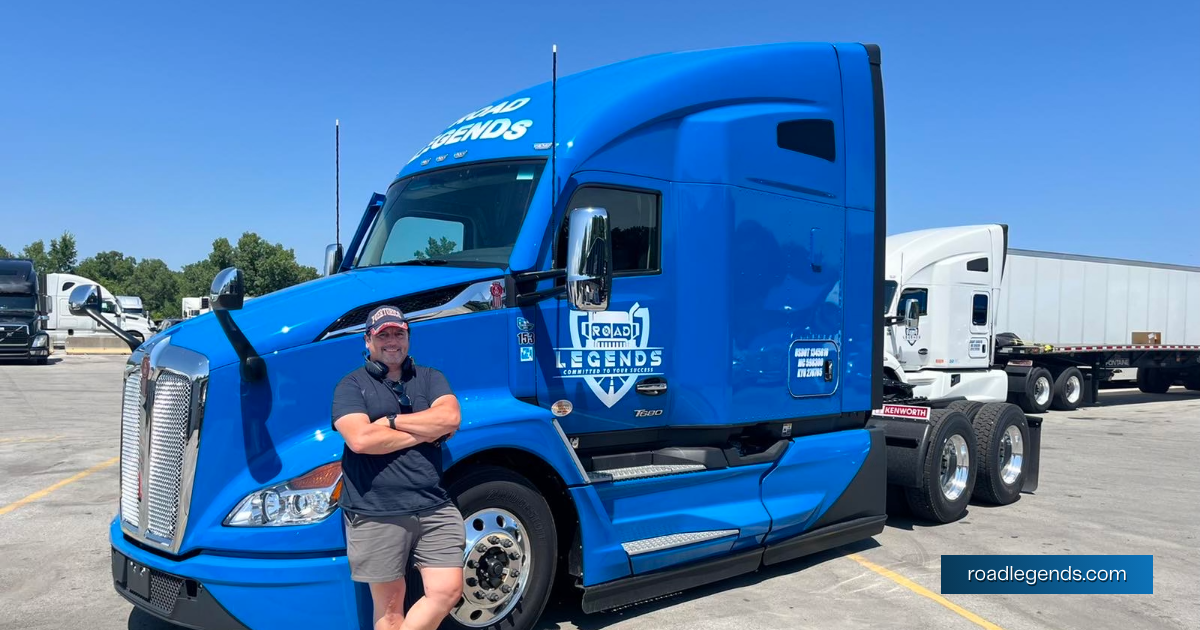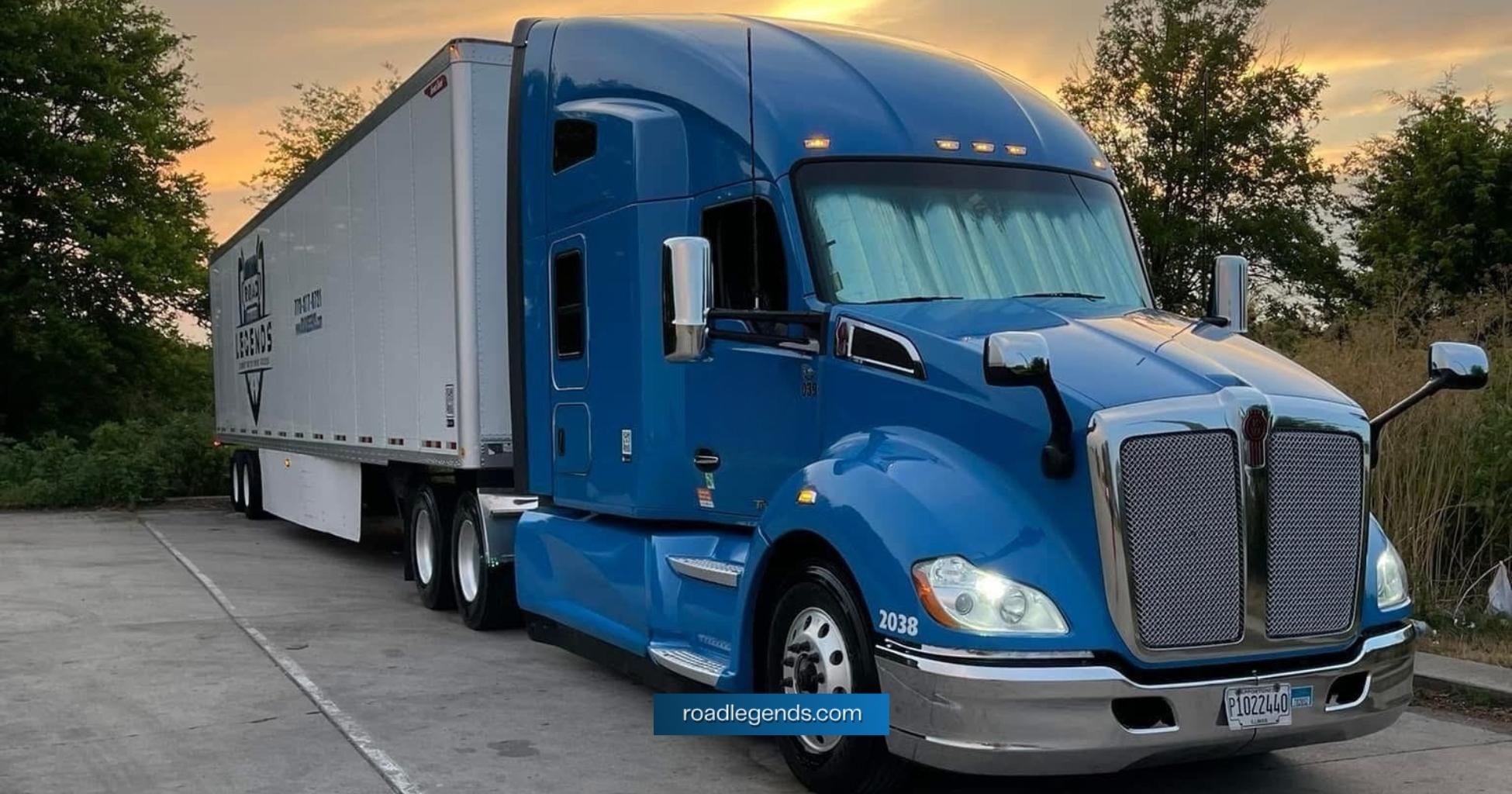
Go-To Guide on How to Become a Truck Driver Made Easier
Truck drivers are a crucial link in the supply chain since they transport items like food, cars, and other goods across the country. The American Trucking Associations (ATA) estimates that truckers moved 11.8 billion tonnes of cargo in 2019. More than 2 million heavy and tractor-trailer truck drivers were reported by the U.S. Bureau of Labor Statistics (BLS) in 2020.
There are numerous ways to get the training you need on your guide for how to become a truck driver, including courses at community colleges, independent driving schools, and transportation firms. Truck drivers are typically paid per mile by businesses. If you have a high school diploma or its equivalent and a commercial driver's license (CDL), you can start working at age 21. There are a few things you should know and do before you can get behind the wheel of a truck before you jump in and truly commit to this experience.
What does a truck driver do?
It may take several weeks or months to learn on how to become a truck driver, and you won't just immediately learn the driving rules during training. Additionally, you'll learn how to organize and plan long travels,do a safety check on your vehicles, and secure cargo.
Although you might frequently drive alone, you will also require customer service abilities to perform your job well. Communication with your operator and the clients that receive deliveries is a requirement of the job.
Up to 14 hours are spent on each shift by truck drivers. The Occupational Information Network stated that 84% of truck drivers worked more than 40 hours each week. The majority also mentioned that they frequently worked under adverse conditions and under time constraints.
Is it hard to become a truck driver?
Truck driving has very low entry requirements, making it simple to get started. Moreover, once you've completed your training, you should have minimal trouble getting employment because there is a continual need for skilled persons due to a shortage of drivers.
Prerequisites on how to become a truck driver?
If you're interested in pursuing a career as a truck driver, there are certain prerequisites you need to fulfill. These requirements will set you on the path to becoming a professional driver and gaining the necessary skills and qualifications.
In this section, we will explore the essential steps and procedures involved in the process of how to become a truck driver. From obtaining a commercial learner's permit (CLP) to acquiring a commercial driver's license (CDL), we'll cover the key milestones on your journey to becoming a skilled and competent truck driver.
Let's dive in and discover what it takes to start a rewarding career in the trucking industry.
Obtain your commercial learner’s permit (CLP)
Your home state has granted you the CLP as authorization. You can acquire CDL-related skills through a CLP. The CLP exam can be taken at your nearby Department of Motor Vehicles, and there are online resources available to help you study and ace the test the first time.
Obtain your commercial driver's license (CDL)
Once you have your CLP, you will need to look for a CDL training program in your area. Your trainers will walk you through every step and assist you in obtaining your CDL, so they can demonstrate what a great chance it could be for someone exploring employment possibilities.
Costs for getting your CDL and enrolling in a truck driver training course range from $3,000 to $10,000. Many employers and even truck driving schools may provide tuition assistance programs to assist drivers in obtaining a CDL due to the rising need for drivers.
Depending on the school you select and the kind of CDL you wish, the time it takes to complete your CDL requirements will vary. The majority of programs last three to seven weeks.
What are my options for CDL licenses and which one should I choose?
Which class of license you require is a crucial factor to take into account when pursuing your truck driver training and CDL prerequisites. The three classes are Class A, Class B, or Class C.
The kind of work you intend to conduct as a truck driver in the future will have a significant impact on the license type you select.
- Class A: Expert drivers are aware that Class A is the ideal choice for large trucks. You can also drive tankers, so it's not just about tractors and livestock haulers! You have access to numerous commercial vehicle types with Class A, including flatbed trucks and farm trucks. Many organizations choose Class A licensed drivers because of their adaptability and the fact that this sort of license is thought to be the most exhaustive option.
- Class B: In a metropolis, Class B operators keep everything running smoothly. They operate buses for public transportation and schools. You've seen a Class B driver if you've seen trucks going around town delivering supplies to different businesses or collecting up garbage at building sites.
- Class C: This is the choice for you if you want to drive a smaller vehicle. It maintains safety measures like airbags while fitting more luggage and passengers into fewer spaces.
On your guide on how to become a truck driver, first note if you want to drive commercial vehicles as a career, getting a Class A CDL is an excellent decision. In addition to allowing you to drive huge trucks, a Class A license also allows you to operate Class B and C vehicles.
Start professional training
You can enroll in CDL exam preparation courses at community colleges, independent truck driving schools, and trucking businesses. Make sure you are familiar with the Bureau of Motor Vehicles or Department of Motor Vehicles regulations in your area because some governments have their own monitoring and accreditation procedures.
When you complete your training, you will be employed if you acquired your CDL through a company training program. If you went to truck driving school, though, you must start looking for work. It pays to compare offers because most businesses provide sign-on incentives and other benefits. Receiving many job offers is typical due to the ongoing driver shortage and increasing demand for drivers.
Record requirements for truck driving
You'll probably be trusted with significant volumes of precious cargo at a time when driving trucks for a third-party delivery company. Given this, it makes sense that prospective truck drivers must meet strict conditions, such as having a clean driving record. Most employers will run a background check to make sure there are no serious offenses on your history that could jeopardize your employment. A motor vehicle report that verifies your accident- and violation-free driving history. You're less likely to be trusted with goods if you're susceptible to car accidents. Your prospective employer will also review your employment record to assess your capacity for maintaining a steady position before checking with the Department of Transportation (DOT) to see if you have a current physical. In order to be considered for the post, applicants must also pass a DOT pre-employment drug test.
Physical requirements for truck driving
There are certain physical prerequisites for truck driving because it can be a physically demanding job. Your physical wellness is one of the necessities. Passing a DOT physical, which evaluates your vision, hearing, and general health, is how your health is determined. Being able to tolerate prolonged sitting is another prerequisite, which is necessary if you wish to work as a truck driver. It's possible that you'll have to load and unload your own trucks. In this situation, the organization might need someone who can lift 50 lbs.
Due to the extensive travel involved in truck driving, truck drivers frequently have to spend days or even weeks at a time separated from their homes and families. Determine what "regional" deliveries mean to that specific business while speaking with a truck driver recruiter. For some businesses, regional may mean that drivers spend several nights at home each week, while for others it can mean that they are on the road for the majority of the month. Local pickup and delivery jobs or port roles are good places to start your search if regional and over-the-road hauls are not for you.
Start driving
You can start driving and finalize the procedure on how to become a truck driver once you have obtained your CDL and secured a truck driver job in the industry.
One of the most crucial things you can do when starting your profession is to gather experience. Future opportunities will increase as you gain more experience.
Is a truck driving career really worth it?
If you're wondering how to become a truck driver, these benefits make a career in truck driving even more enticing.
Benefit #1 Explore the country to get paid
What’s better than getting paid to explore the country? The beauty of long drives and watching the sunsets is surely something we would love to be paid for.
Benefit #2 Higher salaries due to higher demand
North America is now facing a truck driver shortage. Truck driving jobs are available across many countries, and this is expected to rise in the future as well.
Benefit #3 Job security
The trucking industry offers great job security due to a shortage of drivers, which means there is high demand for new drivers to start training!
Benefit #4 On-the-go learning
A lot of truck drivers listen to audiobooks or other educational audio while on the road. Since drivers spend a great amount of time on the road, it becomes an ideal time for them to absorb some new knowledge while enjoying the solitude of the drive.
If these benefits make you want to start a career in truck driving, contact Road Legends today!

Best 11 Trucking Podcasts We Bet You’ll Actually Enjoy
Country playlists and radio talk had their charm, but podcasts have completely changed the game for drivers. Check out this list of the 11 best trucking podcasts.

6 Practical Ways To Manage Truck Downtime Before It Costs You
Truck downtime can drain your revenue and hurt customer satisfaction. Discover simple, proactive steps to reduce downtime, improve fleet performance, and keep your trucks on the road where they belong.

Driver’s Knee Got You Down? Here’s How to Fight Back
Spending long hours on the road can lead to knee pain, known as Driver’s Knee. Learn how truckers can prevent and manage this common issue.

